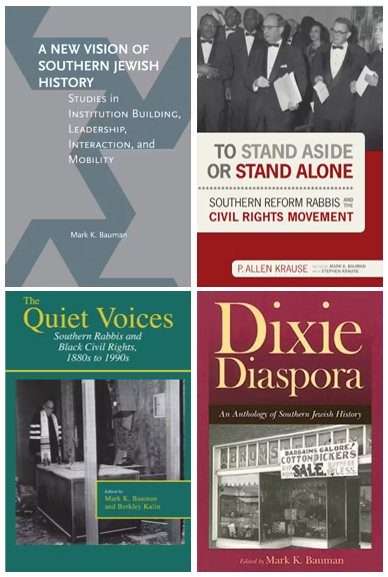William & Sue Anne Bengal Lecture: “The Debate Over Southern Jewish Distinctiveness”
The Religious Studies Department selected Mark K. Bauman to present the William & Sue Anne Bengal Lecture this spring. Bauman, a retired professor of history at Atlanta Metropolitan College, is an accomplished scholar, author of eleven books, and winner of several awards. He most recently received the 2023 Southern Jewish Historical Society (SJHS) award for the best book in the field published within the preceding four years. His lecture, “The Debate Over Southern Jewish Distinctiveness,” discussed several highlights of this ongoing conversation among scholars of Judaism in the United States.
Historians have asked, “What makes South-Eastern Jews different from North-Eastern Jews?” This discussion often revolves around rural Southern Jews in relation to the Civil War and the segregation era, compared to the behavior in Northern urban communities, such as New York City. In response to opinions suggesting that Southern Jews should have vocalized more contempt for slavery, Bauman countered that activism was more feasible and less risky in the Union cities. Moreover, Judaism was already facing scrutiny in the Protestant South, and adding anti-slavery activism to the equation would have inflicted danger on the Jewish communities. 
In the post-Civil War era, reform Judaism bloomed in the South. This emergence heightened historians’ desire to draw connections between the two regions. However, Bauman resists the impulse to solely categorize Southern Jewish identity within the framework of Northern cities. He spotlights several “firsts” in American Judaism that southern states boast: the establishment of the Reformed Society of Israelites in Charleston during the 1820s, the appointment of the first rabbi to pulpit in Baltimore in the 1830s, and the election of the first Jewish Senator from Florida in 1855. With these and other claims, the South plays its own part in shaping the early Jewish landscape of the United States.
Bauman challenges the phrasing of “What makes Southern Jews different?”, arguing that it lacks perspective, as most historians compare Jewish communities in New York City to those in small southern towns. He quipped, “You can’t compare apples to oranges!” Bauman instead offers the question, “What is Southern Jewishness like?” His proposal will naturally cause comparisons between the Northern and Southern communities to arise. More importantly, however, this perspective allows similarities to be drawn between Jews in the South, as well as between those in small towns throughout the nation, since similar nuances can exist between rural areas despite the geographic location. He suggests that this look into local circumstances, rather than regional differences, could inform and deepen the discussion of Judaism in the US. Bauman prompts academics to broaden their perspective and appreciate the complexities of Jewish identities by examining them more closely.
 Skip to main content
Skip to main content
